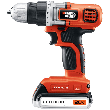Brick walls have long had a certain charm due to their innate durability, and often-colorful appearance. There is a bit of a drawback with these types of walls, and that is over time they have a tendency to deteriorate. Luckily, repairing brick walls isn't all that difficult as long as you do a couple of things. The first is that you will need to catch the problem early enough, and the second is that you follow these rather simple directions.
- Identify the problem. While it should be pretty self explanatory, the first step in repairing a brick wall is to identify what the problem is. The reason for this actually rather simple in if the problem is only crumbling or deteriorating mortar you will be doing one thing, while if it is a problematic brick, you will be doing a bit more work.
- Remove the loose material. Regardless of what the problem is, you need to remove as much of the loos material as possible with your hands. This will allow you to see just how damaged the area is, and also help you avoid making any potential mistakes.
- Chisel till it's smooth. When you have finished removing as much of the material by hand as you can, then you bring out the chisel. Gently tap and scrape the material that is damaged until it is all gone. For damaged bricks you will also need to remove the mortar that surrounded it until you have reached the undamaged bricks as well. Basically, just remove all mortar until you reached the undamaged bricks. Be careful that you don't open up too large of an area so that your wall ends up falling down, or that you have a large hole going all the way through to the interior/exterior of your home.
- Clean the area well. Once you have gotten all the mortar from the bricks around the problem area, start cleaning the area as well as you can. To do this, use some water and scrub brush. Be careful as you do this so that you don't accidentally damage any masonry that is still good.
- Make your mortar. Allow the area that you just cleaned to completely dry before you begin laying any new mortar. In fact, this would be the perfect time to go to the local home improvement store and pick some new mortar and bricks that you may need. When you get home, make sure that you follow the directions for making the mortar as carefully as you can to ensure that you do a good job with it.
- Lay the mortar and brick. Using a mortar trowel, begin laying down the mortar and brick. As you lay down the initial layer of mortar that you use the previously laid mortar (the parts that haven't been damaged) as a guide to ensure that you don't lay it on too thick, or not thick enough. Center the brick according the pattern that has already been established (more than likely an alternating pattern), and tap it into place. Then scoop some more mortar onto the trowel, and work it into remaining cracks around the brick. Repeat the process for the remaining bricks.
- Brush off the dry mortar. When the mortar has dried to the touch, take a wire brush and then lightly brush along the wall and mortar in a diagonal pattern. This will help remove any crumbs or excess mortar that may be sticking out. Use a sponge, and clean off any mortar residue from the bricks themselves.
- Tarp and check. Tie a tarp into place over the patch work that you have just completed, and allow the bricks and mortar to set for about three days. The tarp will help protect the work that you just did from any adverse weather. Over that time, remove the tarp once a day, and mist down the wall. This will help ensure that the mortar cures properly.
While the task outlined here is one that most homeowners can take care of themselves, there will be times when you should have a professional do the work for you. The simple reason is that small repair jobs are one thing, but having to repair large sections of a brick wall at once is something else. Remember, there is no shame in hiring a professional, and it is definitely the mark of a good do-it-yourselfer to know when to get much needed help.
Author Bio
Lee Wyatt
Contributor of numerous Tips.Net articles, Lee Wyatt is quickly becoming a regular "Jack of all trades." He is currently an independent contractor specializing in writing and editing. Contact him today for all of your writing and editing needs! Click here to contact. Learn more about Lee...
Dealing with a Narrow Hallway
For most people one of the most difficult areas of the home to decorate properly is a long, narrow hallway. Dealing with ...
Discover More
Make Your Own Salad Dressing
If you are looking to truly put your own twist on a salad, then what better way to do that than by making your own salad ...
Discover More
Understanding the Types of Fertilizers
Fertilizers have the potential to be great gardening tools; however, they must be used wisely. Part of using fertilizers ...
Discover More
More Home Improvement Tips
Reducing Dampness in Your Home
If your home is particularly damp, you may wish to reduce the dampness for health reasons or for comfort. There are a ...
Discover More
What are Vapor Barriers?
Whether you are building a new home, remodeling your old one, or getting a home inspection on a potential purchase, ...
Discover More
When to Hire a Home Inspector
A home inspector is one of the best ways to find out what the general condition of your home is. The question is, do you ...
Discover More

Comments